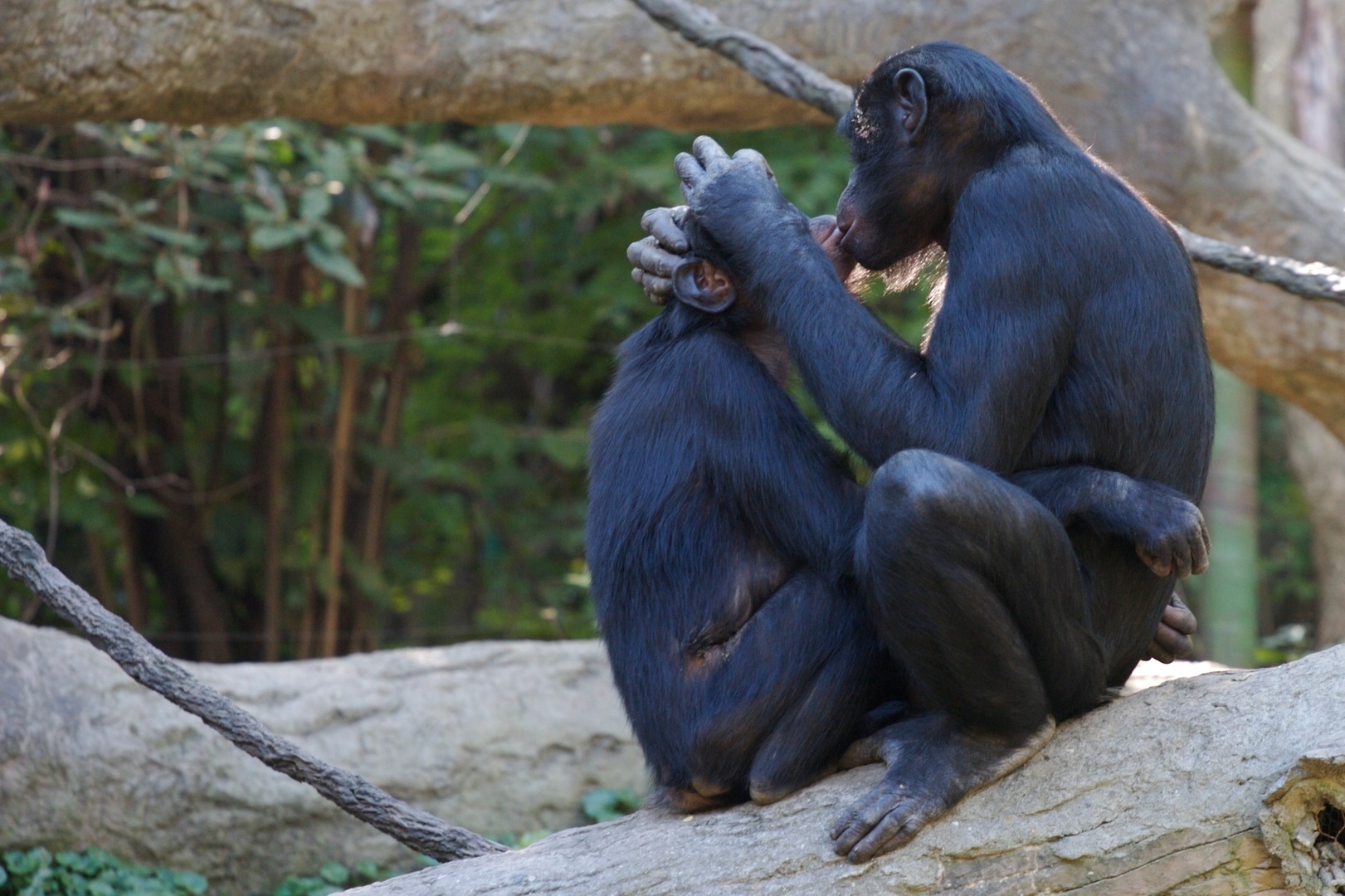 Image of bonobos from www.freewallpaperspot.com
Image of bonobos from www.freewallpaperspot.com
Photographer Graham McGeorge has captured remarkable images of bonobos, our closest living relative that share 98.7% of human DNA. The photos depict bonobos engaging in similar behaviors as humans, like the image above from another photographer of bonobos embracing each other. McGeorge also captured images of bonobos caring for their young as well as a bonobo who lost his hair with advancing age. Truly a must-see!

Ecological science of human population dynamics is presented at the following links,
http://www.panearth.org/
www.panearth.org
If human population dynamics is essentially common to the propulation dynamics of other species and, consequently, if food supply is the independent not the dependent variable in the relationship between food and population, then a lot of what has been reported could be distractions that serve to dismiss rather than disclose vital but unwelcome science of what could somehow be real regarding the human population and, more importantly, why our behavior is so utterly destructive of everything we claim to be protecting and preserving. May I make a request? Could we focus now, here, on whether or not human exceptionalism applies to its population dynamics alone or is the dynamics of all species, including human beings, similar? Whatever your response, please make reference to scientific research that supports your point of view.
It seems to me that if we keep engaging in and hotly pursuing worldwide overproduction, overconsumption and overpopulation activities, distinctly human activities that cannot be sustained much longer on a planet with size, compostion and ecology of Earth, then the human species is a clear and present danger on our watch to future human well being, life as we know it, and environmental health. If we can see ourselves to be 'the problem', then it is incumbent upon us to bring forward the best available evidence from science, especially when that evidence happens to relate directly to why we are pursuing a soon to become, patently unsustainable (superhigh)way of life. A tip of the hat is due Rachel Carson for making me aware of the superhighway. Should humankind emerge from 'the bottleneck' E.O. Wilson imagines for us in the future and somehow escape the precipitation of our near-term extinction, how are those survivors to organize life sustainably and not repeat the mistakes we are making now... and have been making for a long time? Without knowledge of why we are doing what we are doing, every one of us is forever trapped in an eternal recurrence of unsustainable life cycles, I suppose.
Sincerely yours,
Steve Salmony
PS: Rachel Carson's quote,
We stand now where two roads diverge. But unlike the roads in Robert Frost's familiar poem, they are not equally fair. The road we have long been traveling is deceptively easy, a smooth superhighway on which we progress with great speed, but at its end lies disaster. The other fork of the road—the one "less traveled by"—offers our last, our only chance to reach a destination that assures the preservation of the earth.
Rachel Carson (1907 - 1964)
http://www.dailymail.co.uk/news/article-2411168/Extraordinary-images-ju…
These are more amazing images of bonobos. Young bonobos are similar to young humans-they have similar mannerisms and once they reach adult stage become more relaxed.